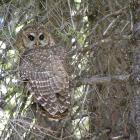In the 1990s, the US Forest Service in California had the opportunity—backed by sound science, greater public awareness, and, significantly, political support—to potentially avoid the fire disasters of the early 2020s. But as the history of the Sierra Nevada Framework demonstrates, politics, economic pressure, and agency culture can present formidable challenges when trying to implement systemic change, particularly when it comes to the beneficial use of fire. As it also shows, what politics can give, politics can also take away.

Map of proposed Sierra Nevada Forest Plan Amendment Project, 2000. The US Forest Service’s Sierra Nevada Framework covered 11 national forests and 11.5 million acres of complex and often interrelated ecosystems, stretching 400+ miles from California’s northern border to Bakersfield in Southern California. The iconic Sierra Nevada is the longest continuous mountain range in the lower 48 states.
Map of proposed Sierra Nevada Forest Plan Amendment Project, 2000. The US Forest Service’s Sierra Nevada Framework covered 11 national forests and 11.5 million acres of complex and often interrelated ecosystems, stretching 400+ miles from California’s northern border to Bakersfield in Southern California. The iconic Sierra Nevada is the longest continuous mountain range in the lower 48 states.
Courtesy of USDA Forest Service. Click here to view source.
 This work is licensed under a Creative Commons Public Domain Mark 1.0 License.
This work is licensed under a Creative Commons Public Domain Mark 1.0 License.
Starting in the early 1970s, influenced in part by US National Park Service fire policy in California and centuries-long use of fire by Indigenous peoples that helped shape fire-dependent forests, the Forest Service tested the idea of allowing some lightning-caused fires to burn in wilderness areas. These investigations led to the agency changing its Division of Fire Control into the Division of Fire Management in 1973 and, in 1978, revising its fire policy to develop fire protection and fire-use programs that would be more cost-effective and responsive to the needs of the land.
But new division names and new research-based policies do not necessarily result in new management practices. In California’s Sierra Nevada, for example, the Forest Service’s decades-long culture of suppressing most if not all wildland fires continued, resulting in forests choked with accumulated debris and highly flammable shrubs and small trees—prime conditions for catastrophic fires.
In the summer of 1991, The Sacramento Bee published “The Sierra in Peril,” a five-part series describing the declining environmental health of the iconic Sierra Nevada range. Highlighting multiple threats, from excessive logging to overdevelopment, Tom Knudson’s Pulitzer Prize–winning series also noted the Forest Service’s overzealous fire suppression as “one of the most wide-ranging and serious problems in the mountains.” Knudson did not, however, include estimates of overall environmental damage because “no government agency, university or environmental group has taken an exhaustive look at the entire range.”
Knudson’s words did not go unheeded. Government agencies, scientists, and state and local groups organized meetings to address these and other concerns, all within a few months after the publication of the series. The Forest Service also actively engaged with his conclusions. At one statewide conference in the fall of 1991, Forest Service Regional Forester Ron Stewart told the Los Angeles Times that the agency would reduce logging, the life blood of its land management, and give higher priority to wildlife, recreation, and the overall health of the forest.

The California Spotted Owl, considered an indicator species, lives in mature and old-growth forests in the Sierra Nevada. As noted in a 1992 Forest Service report, to maintain a viable population requires looking at the greater ecosystem, much like that used later in the framework. All impacts must be balanced when making management decisions, the report maintained, “not just owls and timber supply as important as those are. The matter is not that simple. It never has been.”
The California Spotted Owl, considered an indicator species, lives in mature and old-growth forests in the Sierra Nevada. As noted in a 1992 Forest Service report, to maintain a viable population requires looking at the greater ecosystem, much like that used later in the framework. All impacts must be balanced when making management decisions, the report maintained, “not just owls and timber supply as important as those are. The matter is not that simple. It never has been.”
Photo by Pacific Southweste Region 5, 2012. Accessed via Wikimedia Commons.
 This work is licensed under a Creative Commons Attribution 2.0 Generic License.
This work is licensed under a Creative Commons Attribution 2.0 Generic License.
The US Congress also enacted the Sierra Nevada Forests Ecosystem Study Act, calling for independent experts to evaluate the health of the region’s remaining old-growth forests. The resulting Sierra Nevada Research Ecosystem Project (SNEP) became known as one of the best ecological studies ever conducted—if not the best—and served as the gold standard against which all Forest Service Sierra Nevada plans at the time were measured. With the Bill Clinton/Al Gore administration assuming power in January 1993—coupled with new Forest Service leadership, state-of-the-art research, the exhaustive SNEP report, and changing public opinion—the agency now had both the scientific and political support needed to develop a more sustainable approach to managing its 11.5 million acres in the Sierra Nevada.
For the remainder of the 1990s, the Forest Service hosted public meetings in California and worked on multiple drafts and reviews, producing a management plan to protect old-growth, aquatic, and riparian ecosystems and the species that rely on them. This framework also developed guidelines for integrating fire and fuels consistently across national forests and set priorities for fire and fuel management to reduce hazardous fuels and minimize the spread of catastrophic fires. By January 2001, the framework was approved, shifting the region’s emphasis away from timber production and confirming fire as a natural process. Unfortunately, these guidelines did not last for long.
On 20 January 2001, only days after the Forest Service approved this new landscape-based approach, George W. Bush was inaugurated as president, returning the agency to a more traditional economic agenda. The Bush administration never publicly called for the framework’s repeal, but its newly appointed Forest Service leadership soon put the plan under another review, primarily focused on its guidelines for fire. This new review resulted in the overturning of the entire framework, finding its emphasis on prescribed fire “too risky,” and its plan for thinning “too meager.” The 2004 replacement plan called instead for more logging and less use of beneficial fire, predicting this would reduce catastrophic fires by 30 percent over 50 years.

Acres burned in the Sierra Nevada, 1920–2021. Forest Service leadership under the Bush administration maintained that their new 2004 management plan, that reduced the use of prescribed fire, would also reduce catastrophic wildland fires in the Sierra Nevada by 30 percent over 50 years. As this graph from the Sierra Nevada Conservancy shows, however, acres burned in recent fire seasons are orders of magnitude greater than what the Sierra Nevada has experienced over the last 100 years.
Acres burned in the Sierra Nevada, 1920–2021. Forest Service leadership under the Bush administration maintained that their new 2004 management plan, that reduced the use of prescribed fire, would also reduce catastrophic wildland fires in the Sierra Nevada by 30 percent over 50 years. As this graph from the Sierra Nevada Conservancy shows, however, acres burned in recent fire seasons are orders of magnitude greater than what the Sierra Nevada has experienced over the last 100 years.
© 2022 Sierra Nevada Conservancy. Used by permission.
The copyright holder reserves, or holds for their own use, all the rights provided by copyright law, such as distribution, performance, and creation of derivative works.
Clearly, things have not gone as planned. Not only have wildfires in the Sierra Nevada grown in size but, according to a 2023 paper in Ecosphere, fire severity has also increased, requiring even more forested lands to be burned at low to moderate severity to restore them. Another 20-year study, also published in 2023, documents that prescribed fire, and mechanical treatments combined with prescribed fire, can help restore the Sierra Nevada’s environmental health, but it would require a long-term commitment to shared stewardship.
In the 1990s, the Forest Service had a decade-long opportunity to protect old-growth forests and other ecosystems in California, based on extensive research by both independent experts and agency scientists. While there is no guarantee of what would have happened if they had been implemented, the framework may have also helped moderate the size and severity of wildfires in the early 2020s. But as the history of the framework demonstrates, when politics, economics, and science collide, too often politics and economics prevail.
How to cite
Smith, Diane. “The Sierra Nevada Still in Peril.” Environment & Society Portal, Arcadia (Spring 2024), no. 7. Rachel Carson Center for Environment and Society. doi:10.5282/rcc/9838.
ISSN 2199-3408
Environment & Society Portal, Arcadia
 This work is licensed under a Creative Commons Attribution 4.0 International License.
This work is licensed under a Creative Commons Attribution 4.0 International License.
2024 Diane Smith
This refers only to the text and does not include any image rights.
Please click on an image to view its individual rights status.
- Finney, Mark A. “Design of Regular Landscape Fuel Treatment Patterns for Modifying Fire Growth and Behavior.” Forest Science 47, no. 2 (2001): 219–28. doi:10.1093/forestscience/47.2.219.
- McKelvey, Kevin S., Carl N. Skinner, Chi-ru Chang, Don C. Erman, Susan J. Husari, and Tom Knudson. “The Sierra in Peril: From Mining to Malls, Onslaught Takes Toll.” The Sacramento Bee, 9–13 June 1991. Reprint: http://media.sacbee.com/static/news_images/2008/sierra%20parts/SierraPart1.pdf.
- Paddock, Richard C. “‘Sierra Summit’ Aims to Halt Toll on Ecosystem.” Los Angeles Times, 19 November 1991. https://www.latimes.com/archives/la-xpm-1991-11-19-mn-81-story.html.
- Parsons, David J., Jan W. van Wagtendonk, and C. Phillip Weatherspoon. “An Overview of Fire in the Sierra Nevada.” In Sierra Nevada Ecosystem Project: Final Report to Congress, Vol. II, Water and Wildland Resources, 1033–40. Davis: University of California, Centers for Water and Wildland Resources, 1996. https://www.sierraforestlegacy.org/Resources/Conservation/FireForestEcology/FireScienceResearch/FireEcology/ FireEcology-Mckelvey96.pdf.
- Smith, Diane. “From Research to Policy: The White Cap Wilderness Fire Study.” Forest History Today (Spring/Fall 2014): 4–12. https://www.fs.usda.gov/rm/pubs_journals/2014/rmrs_2014_smith_d001.pdf.
- Stephens, Scott L., Daniel E. Foster, John J. Battles, Alexis A. Bernal, Brandon M. Collins, Rachelle Hedges, Jason J. Moghaddas, Ariel T. Roughton, and Robert A. York. “Forest Restoration and Fuels Reduction Work: Different Pathways for Achieving Success in the Sierra Nevada.” Ecological Applications 34, no. 2 (2024): e2932. doi:10.1002/eap.2932.
- Williams, J. N., H. D. Safford, N. Enstice, Z. L. Steel, and A. K. Paulson. “High-Severity Burned Area and Proportion Exceed Historic Conditions in Sierra Nevada, California, and Adjacent Ranges.” Ecosphere 14, no. 1 (2023): e4397. doi:10.1002/ecs2.4397.








